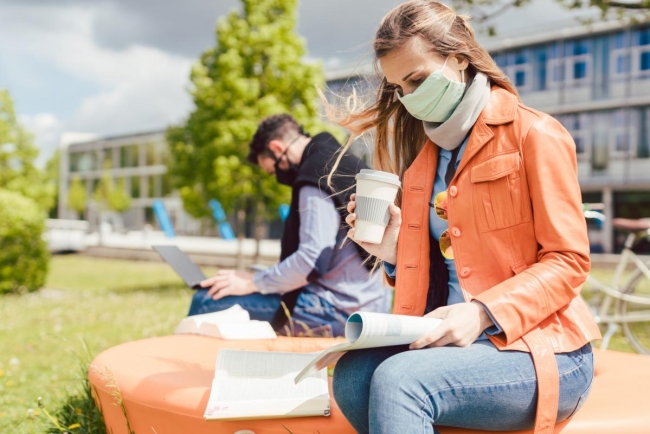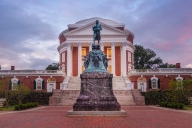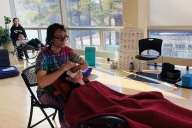You have /5 articles left.
Sign up for a free account or log in.

kzenon/iStock
Vaccination rates are picking up across the country, including at colleges and universities. Students and staff are still catching COVID-19, but the large spikes that characterized the fall semester are now mostly absent.
Most of those eye-popping outbreaks last term were at large public universities, which are now being helped by more available testing, better guidance and the protective immunity of their previously infected students.
“We just got better at this. Colleges and universities just got better at quarantining, just got better at early identification of these things,” said Chris Marsicano, a professor of higher education and director of the College Crisis Initiative at Davidson College. “Practice makes perfect.”
Students, he said, have also likely become more compliant with regulations and have rushed to get the vaccine when they’re eligible.
Last week, the University of Alabama reported 39 cases. Clemson University reported 53. Both universities had been reporting hundreds of students infected earlier in the semester.
But of course, those 40 or 50 students do add up. Higher education has not completely escaped COVID-19 infections this year. Of the 660,000 cases The New York Times has cataloged at colleges and universities since the pandemic started, about 36 percent of them occurred in 2021.
And some colleges are still seeing spikes. Saint Vincent College in Pennsylvania, for example, enacted a stay-at-home order for students at the end of April after an increase in positive test results. The college has seen 116 cases this semester in a student body of about 1,500.
Several small, private institutions saw many more cases this semester than last semester. North Carolina Wesleyan College, for example, has had 101 cases this semester, after only 70 in 2020, according to The New York Times. Florida Southern College saw a nearly 200 percent increase in cases this term -- 115 cases in 2020 became 227 this spring. Taken as a whole across colleges, increases could potentially be due to better testing regimens, looser restrictions or pandemic fatigue.
But while infections do continue, there has been a growing disinterest in discussing them. Local newspapers that were once filled with stories about infections at nearby colleges have moved on. Protests and “die-ins” by graduate students and other workers have ebbed away.
“There’s a lot of COVID fatigue in general. People are just kind of tired,” said Robert Kelchen, a professor of higher education at Seton Hall University. “There were so many cases at the end of the fall semester that spring caseloads haven’t gotten the same amount of attention. Also in much of the country, the virus situation got better during the spring.”
Marsicano said fatigue plays a role, as does public messaging.
“Reading about COVID cases and increases on campuses goes against the larger narrative of ‘We’re getting close to that light at the end of the tunnel,’” he said. “It’s more complicated than in reality. If colleges don’t mandate the vaccine or they don’t have very high levels of vaccine uptake among their students, for public health and safety, they are still going to have to test students in the fall of next year.”
The widespread and early uptake of the vaccine nationwide has also lowered the stakes of outbreaks at colleges and universities slightly. In the fall, there was concern that college reopenings would lead to infections and deaths in nearby communities. Several pieces of research have confirmed that was indeed what happened, at least at some institutions. Now with a growing number of vulnerable people vaccinated, deaths are less of a concern than they were before.
Many people seem to want to put COVID-19 in the rearview mirror. There have been no apologies in federal and state governments for the general handling of the pandemic, and there are likely to be none regarding the situation at colleges and universities.
“To me the failure in those cases [of outbreaks at large public institutions] does not lie with college administrators, it lies with appropriators. It costs a lot to test at the level you needed to to stop outbreaks,” Marsicano said. “When appropriators have basically said ‘You need to be in-person in order to receive full funding and by the way we’re not going to give you enough tests at the level you need to,’ I have a hard time knowing what college and university administrators could have done.”
A high-profile article in The New York Times last week suggested experts believe the United States may never reach the herd immunity threshold needed to stop COVID-19. Instead, Americans may need to learn to live with the disease as something that needs to be contained. If that’s true, infections on college campuses are likely to continue, even if normalcy returns.




